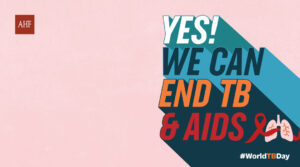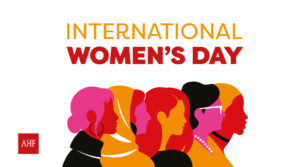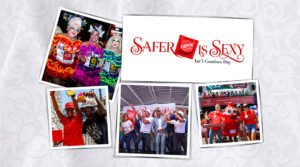Four decades ago we saw the birth of the myth that HIV only affected groups stigmatized by society, especially homosexual men, people who inject drugs and people dedicated to the sex trade.
However, the facts have shown that the virus does not distinguish gender, age, skin color or sexual orientation, but can affect anyone. Even today people think the fact of having a certain identity (being gay, Trans or bisexual, for example) might put someone at risk of acquiring HIV, while the real risk factors are actions.
Sexual intercourse
According to the National Institute of Child Health and Human Development in the United States, there are certain factors that increase a person’s chance of contracting HIV.
Said risk does not lie in being this or that (man, adolescent, drug user, trans), but in the actions that these people carry out and, of course, the specific conditions in which they carry them out.
Thus, for example, having sexual intercourse is one of the risk factors for acquiring HIV, but it is specifically so when doing it without a condom. It must be remembered that unprotected anal or vaginal intercourse is the most common route of transmission of HIV worldwide today.
Added to this is the fact of having multiple sexual partners, which is common among adolescents and young adults in much of the world. This raises their risk of acquiring HIV and other sexually transmitted infections (STIs) compared to older age groups (although this does not mean older age groups are free of risk).
A group of people who are especially vulnerable to HIV are those who have other STIs, such as syphilis, chlamydia, gonorrhea, bacterial vaginosis or herpes, since these infections produce various lesions that function as the “gateway” of HIV to the human body.
In the same way, the fact that someone has an STI indicates that they likely did not use a condom in their sexual relations, so they could have more than one infection at the same time.
Recreational drugs
Drug use poses a variety of health risks, but we don’t need to cover all of them here. Rather, it is important to highlight how the use of these substances can put you at particular risk of contracting HIV.
On the one hand, recreational drugs, such as alcohol or illegal substances, often affect reasoning abilities, which can lead to risky behaviors such as having sex without a condom or having sex with several different people.
Just as you should not drive a car under the influence of any drug, it is not advisable to make decisions about your sexual life when your thinking is clouded by these substances, even if it is simply an excess of alcohol.
In addition, on the other hand, there is the use of injecting drugs, which implies other types of risks. By sharing syringes, needles or other utensils for injecting, people who carry out this practice expose themselves to transmitting or acquiring HIV in one of the most efficient forms of transmission: the blood route.
Prevention Options
Fortunately, today there are several ways to prevent HIV that suit different lifestyles. The main and most affordable is the use of a condom, which is a cheap, practical and widely available instrument, which also offers protection against many other STIs.
There is also Pre-Exposure Prophylaxis (known as PrEP), which consists of an antiretroviral treatment that people who do not have HIV take to avoid contracting it. Although more and more countries are beginning to adopt it, it is not a tool that is available to everyone.
And finally, good adherence to treatment by people with HIV also contributes to prevention in the community. If someone with HIV takes their treatment properly, it will lower the levels of virus in their blood (viral load) to undetectable levels, which reduces the chance of transmitting it to 0%.
Now you know, measure your risk and take the necessary actions to avoid HIV, because by taking care of yourself you also protect others.
If you want to take a free HIV test, at AHF Latin America and the Caribbean we do it. Come to our offices, we are in 11 countries in the region.






